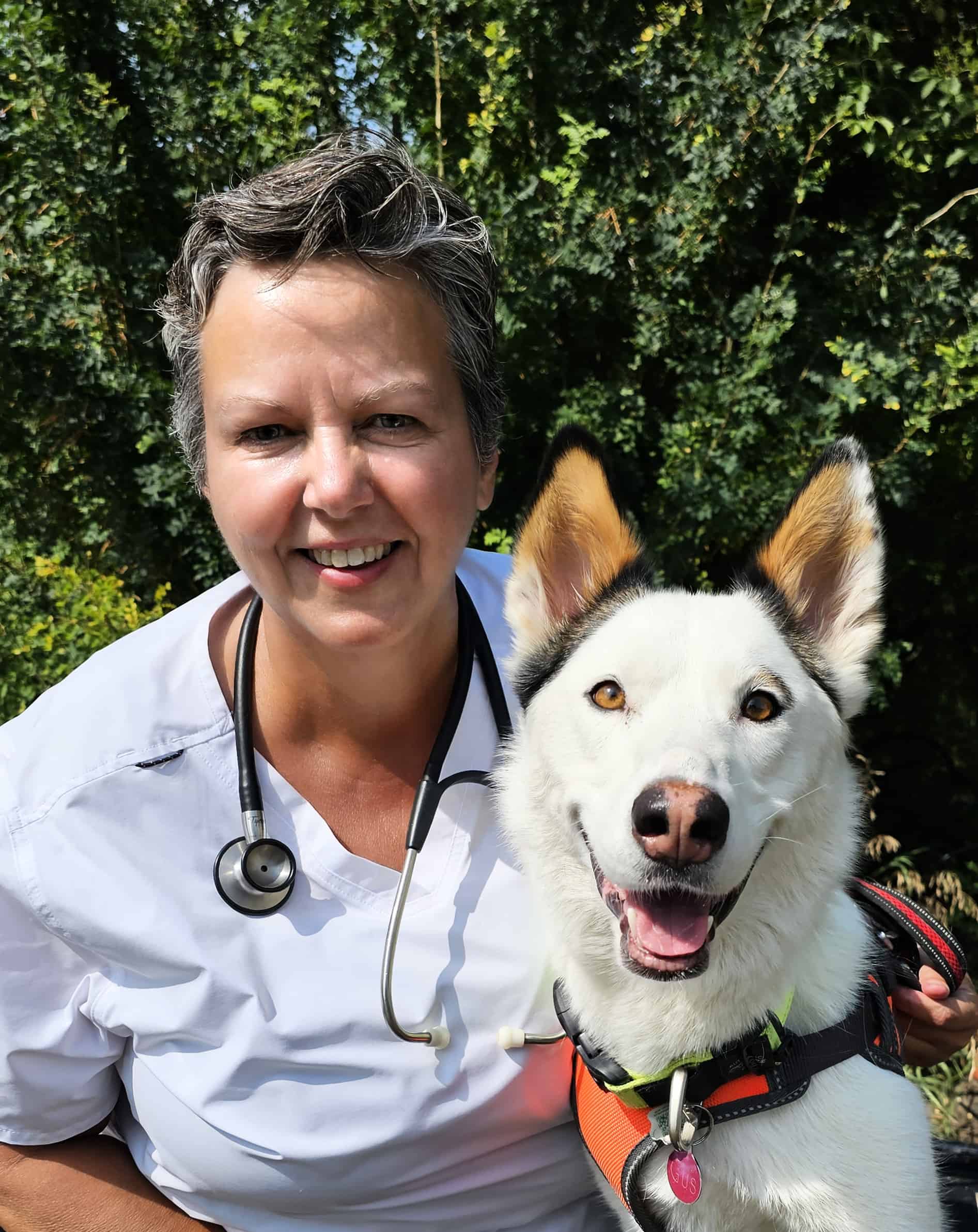Maine Coon cats, with their large size, shaggy coat, and bushy tails, have captivated the hearts of millions of cat owners around the world. Among the many captivating mysteries within the realm of cat coats, the iconic “M” shape that often graces the foreheads of Maine Coon cats holds a special allure.
Many people think that this distinctive feature is a mark of all Maine Coons, and may wonder why do Maine Coon cats have an M on their foreheads. But do all Maine coon cats have this “M” ?
The short answer to this question is no. Quite simply, this distinctive feature is intimately tied to the tabby coat pattern, which is often seen in these gentle giants. But not all Maine Coon cats are tabby cats.
In this article, we’ll demystify the genetic underpinnings that shape this captivating feature that adorns many Maine Coon kittens and cats. Join us in unraveling the intricate code hidden within their fur, shedding light on how nature’s brushstrokes create these remarkable patterns.
Why Do Maine Coon Cats Have An M On Their Forehead?
Many Maine Coon cats have an “M” shape on their forehead, which is a characteristic commonly associated with the tabby coat pattern. The tabby pattern is the most widespread and well-known coat pattern among domestic breeds of cats, including purebred Maine Coon cats.
The reason behind this “M” shape is rooted in genetics. The tabby pattern is widely found in various cat breeds, including the Maine Coon breed of cat. This pattern has likely been passed down through generations of cats and is an integral part of their genetic makeup.
However, not all Maine Coon cats will have the distinct “M” on their foreheads. While the tabby pattern is common, Maine Coons can also come in various other coat patterns and colors, such as solid colors, bi-color, calico, and more.
Cats with non-tabby coat patterns will not exhibit the classic “M” shape on their foreheads, as this marking is a specific characteristic of the tabby pattern.
What Does The “M” Mark On Tabby Cats Foreheads Look Like?
The “M” pattern on a tabby cat’s forehead is a distinctive shape that forms due to the arrangement of darker and lighter fur. It typically appears as a series of darker stripes or lines that converge in the center of the cat’s forehead, creating a shape that resembles the letter “M.”
Here’s how the “M” mark on a tabby cat’s forehead generally looks:
- Starting between the cat’s eyes, there are usually two dark lines or stripes that extend outward and upward towards the cat’s ears. These lines form the outer legs of the “M.”
- The middle of the “M” is created by a darker area of fur running vertically down the center of the forehead, between the two outer legs.
- The overall effect is a clear and recognizable “M” shape when viewed head-on.
- The appearance of the “M” mark can vary in intensity and shape among individual tabby cats. Some cats may have a very prominent and defined “M,” while in others, it might be less distinct or appear more like a series of connected lines.
Remember that the presence of the “M” mark is a key characteristic of the tabby coat pattern, but not all tabby cats will have the exact same appearance of the “M” on their foreheads due to natural variations in fur coloration and patterns.
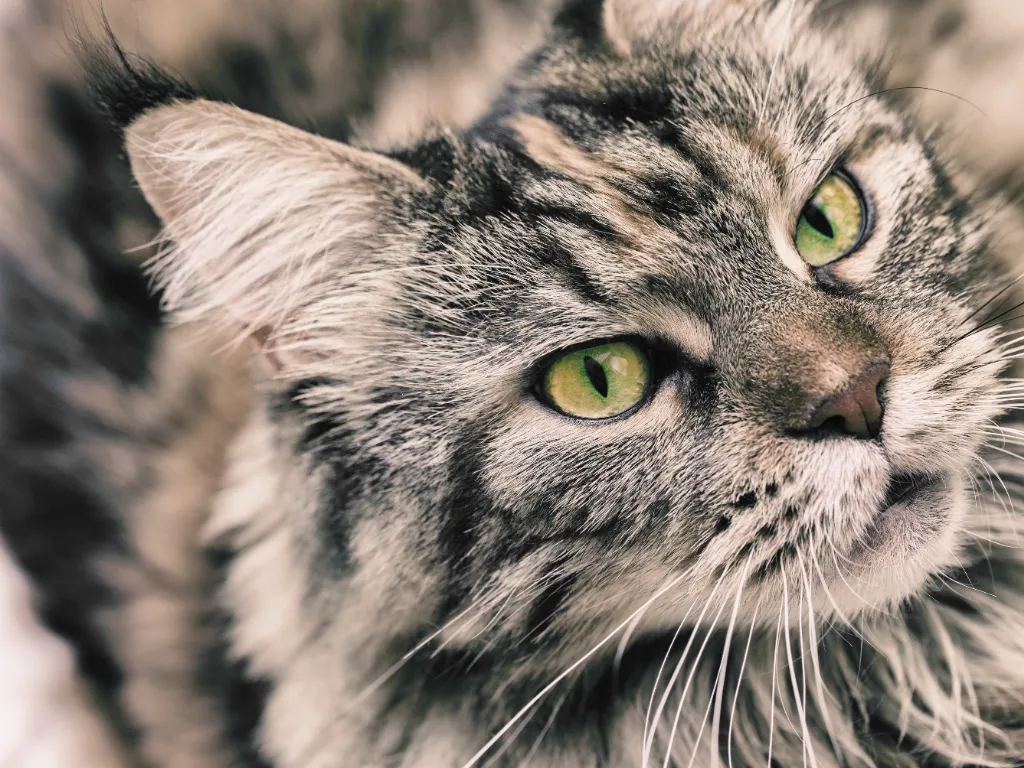
Tabby Coat Pattern Genetics
The tabby coat pattern in cats is a result of a specific genetic combination that affects the way pigments are distributed in the fur. It’s one of the most common and recognizable coat patterns in domestic cats. Tabby Maine Coon cats, like many other breeds, are also very common.
The genetics behind the tabby pattern involve multiple genes interacting to create the distinct stripes, spots, and swirls that characterize this pattern. These genetics are quite dominant, and can be found in many a purebred cat as well as crossbred ones.
The primary genes involved in the tabby coat pattern are the Agouti gene (A) and the Tabby gene (T). Let’s break down the genetics step by step:
Agouti Gene (A):
The Agouti gene controls the distribution of pigment in individual hairs. It has different alleles (versions), each of which influences the appearance of the cat’s coat.
- a (non-agouti): This allele suppresses the production of the pigment called eumelanin, resulting in a solid color coat. Cats with two copies of this allele will typically have a solid color coat with no tabby pattern.
- A (agouti): This allele allows the production of eumelanin in a specific pattern, leading to the tabby pattern. It doesn’t create the pattern directly but sets the stage for it.
Tabby Gene (T):
The Tabby gene works in conjunction with the Agouti gene to create the specific tabby patterns. There are multiple alleles of the Tabby gene that influence the pattern’s appearance:
- Ticked Tabby (Ta): This allele produces a “salt and pepper” appearance where each individual hair is banded with alternating light and dark colors. This results in a pattern called “agouti” or “ticked” tabby.
- Classic Tabby (Tb): This allele creates bold and well-defined stripes on the body, often referred to as the “blotched” or “marbled” tabby pattern.
- Mackerel Tabby (Tm): This allele produces narrow, parallel stripes that run down the body, resembling fishbones.
- Spotted Tabby (Ts): This allele produces distinct spots or rosettes on the coat, similar to the pattern seen in wild cats like leopards.
The combination of Agouti and Tabby gene alleles determines the specific tabby pattern a cat will have. For example, a cat with the agouti allele (A) and the classic tabby allele (Tb) will have a coat with bold, well-defined stripes.
This is, of course, a very simplified explanation of tabby cat coat genetics. Interactions between different alleles can lead to a variety of tabby patterns and colors.
There also exist several other modifier genes that can influence the final appearance of the coat, resulting in a wide range of tabby patterns seen in domestic cats.
Tabby Coat Patterns
While the genetics of the tabby coat pattern result in four general pattern classes as described above, there are a number of variations on the patterns that are recognized by breed standards held by organizations such as The Cat Fanciers Association.
Here are some further descriptions of what you might see:
Classic Tabby (Blotched Tabby):
- Bold, well-defined, and wide stripes that run along the cat’s body.
- Often referred to as “blotched” tabby due to the large, dark markings on a lighter background.
- Bullseye-like patterns on the sides, with one or more dark rings encircling a lighter center.
- Dark lines extending from the eyes, forming the distinctive “M” shape on the forehead.
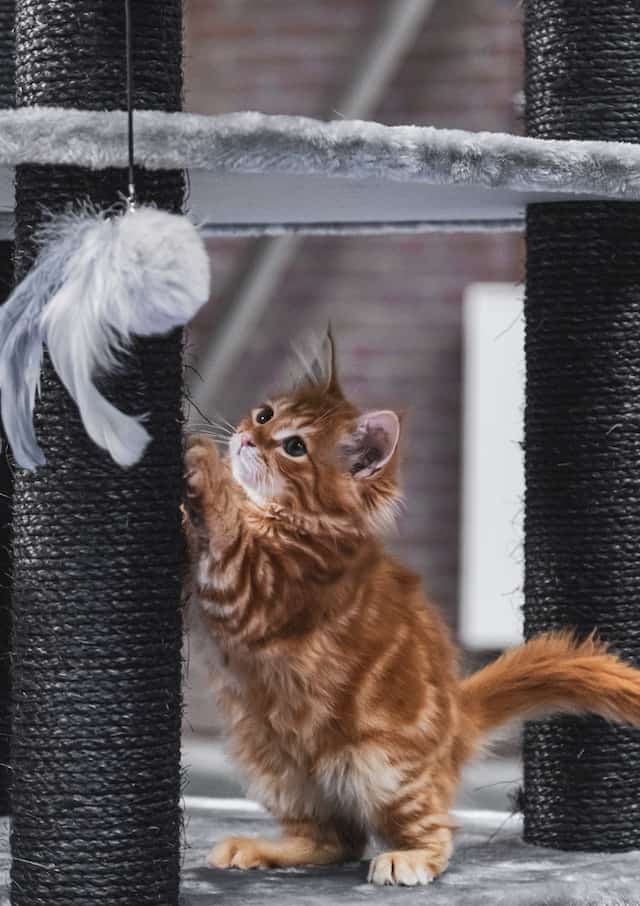
Mackerel Tabby:
- Narrow, parallel stripes that run vertically along the body, resembling fishbones.
- Stripes often appear on the cat’s sides and back.
- Usually, a line of dark color runs down the spine.
Spotted Tabby:
- Large, distinct spots or rosettes on the coat, often resembling the pattern seen on leopards.
- Spots can be irregular in size and shape.
- May have smaller spots on the belly and legs.
Ticked Tabby:
- Also known as “agouti” tabby.
- Each individual hair has alternating light and dark bands, creating a salt-and-pepper appearance.
- Overall, the coat looks even in color from a distance.
Patched Tabby (Torbie or Tortoiseshell Tabby):
- A combination of tabby pattern with tortoiseshell (calico) coloration.
- Patches of tabby pattern mixed with patches of orange, black, and sometimes other colors.
Classic Mackerel Tabby (Combination of Classic and Mackerel):
- Features both bold, wide stripes (classic) and narrow, parallel stripes (mackerel).
- Often has a mix of distinct markings and fine striping.
Marbled Tabby:
- Features a swirling or marbling pattern on the coat, creating a unique and intricate design.
- The swirls can be large or small and may cover different parts of the cat’s body.
- The pattern gives the cat’s coat a sense of depth and dimension, resembling the patterns found in marble stone
The tabby coat pattern is not restricted to a single color and can appear in various coat colors, including gray, brown, red (orange), silver, and more. The pattern’s appearance is influenced by the interaction of the Agouti and Tabby genes, as well as other genetic modifiers.
The specific tabby pattern a cat exhibits can vary widely and, combined with fur of different colors, creates a diverse array of beautiful and unique coat patterns in domestic cats.
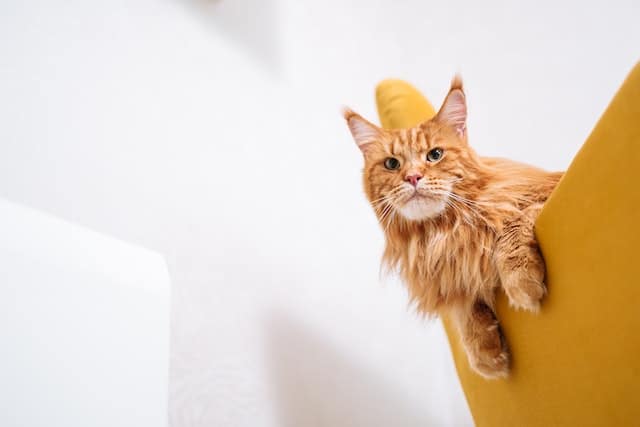
8 Distinctive Features Of Tabby Coat Patterns
Whatever pattern or color tabby cats may be, there are some elements that are common to all of them:
- M-shaped Marking on Forehead: Many tabby cats have a distinct “M” shape on their foreheads, created by darker fur forming lines that converge between the eyes. This marking is a hallmark of the tabby pattern.
- Dark Stripes or Markings: Tabby cats typically have dark stripes, spots, or swirls on a lighter background. These markings can appear on the body, legs, and tail, and their arrangement varies depending on the specific tabby pattern.
- Spine Stripe and Tail Markings: A darker stripe may run down the spine, often extending onto the tail. The tail might have rings or stripes as well.
- Whisker Pads and Facial Markings: Dark lines or spots often extend from the whisker pads outward, accentuating the cat’s facial features and contributing to the overall tabby pattern.
- Patterns of Stripes or Spots: Tabby patterns include various arrangements, such as classic bold stripes, narrow mackerel stripes, large spotted rosettes, swirling marbled patterns, or a mix of these elements.
- Tabby “Bracelets”: Some tabby cats have bands of dark color encircling their legs, resembling bracelets.
- Belly Markings: The belly of a tabby cat can display unique markings, such as spotted or striped patterns, adding to the overall charm of the coat.
- Ear Markings: Dark markings on the ears, like thumbprint shapes or dark lines, are common in tabby cats.
Folklore: Why Tabbies Have An M On Their Forehead
Folklore and popular myth about why tabby cats have an “M” on their forehead vary across different cultures and regions. While these tales are charming, it’s important to remember that they are myths and not based on scientific fact.
Here are a few examples of folklore stories explaining the origin of the “M” mark on tabby cats’ foreheads:
Christian Legend – The Cat’s Blessing from Mary:
One popular Christian legend suggests that a tabby cat earned the “M” mark on its forehead as a blessing from the Virgin Mother Mary. According to the story, a tabby cat kept baby Jesus warm in the manger by curling up beside him. As a token of gratitude, Mary placed her mark (the “M”) on the cat’s forehead.
Islamic Legend – The Cat’s Mercy from Muhammad:
In Islamic tradition, there’s a story about a tabby cat named Muezza. It is said that Prophet Muhammad had a deep affection for cats and had a tabby named Muezza. The “M” on the tabby’s forehead is believed to be a blessing from Allah and a symbol of the cat’s loyalty and friendship, a reward for saving Muhammad from a poisonous snake.
Egyptian Mythology – Connection to the Sun God:
In Egyptian mythology, cats held a special place in the hearts of ancient Egyptians and were associated with the goddess Bastet, who represented home, fertility, and protection. Some tales suggest that the “M” mark on tabby cats is a tribute to the sun god Ra or a symbol of protection from evil spirits.
Medieval European Witchcraft Beliefs:
During medieval times, tabby cats were sometimes associated with witches and magical powers. Folklore in Europe suggested that the “M” on a tabby’s forehead was the mark of a witch’s claw, placed there as a sign of the cat’s allegiance to dark forces.
Pagan Beliefs – Celtic Goddess Brigid:
In Celtic folklore, the “M” on a tabby’s forehead was sometimes attributed to the goddess Brigid, who was associated with the protection of hearth and home. Cats, including tabbies, were considered guardians against vermin and evil spirits.
These stories add to the enchantment and mystery surrounding tabby cats and their distinctive “M” marking. However, it’s important to remember that these tales are cultural myths and legends, and the actual genetic origin of the tabby pattern is rooted in the interactions of specific genes and alleles.
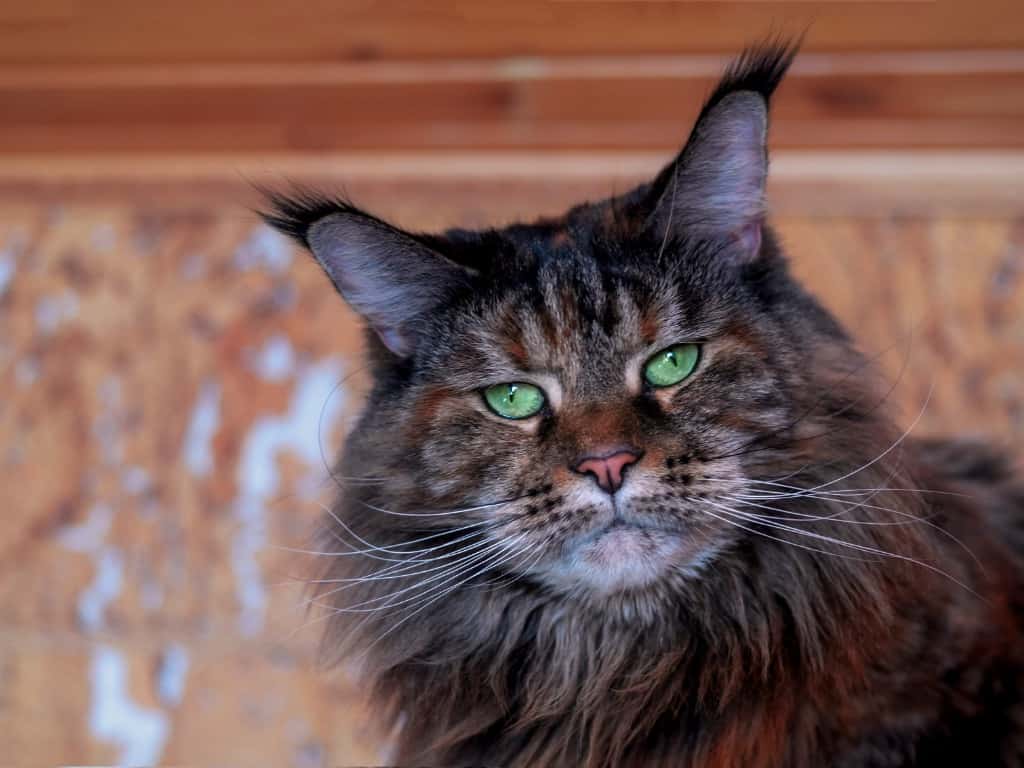
Conclusion
The distinctive “M” marking on the forehead of many tabby cats is a fascinating feature that adds to the allure and beauty of these felines. This characteristic, tied to the tabby pattern, is a product of complex genetic interplay.
While the scientific explanation lies in the realm of cat genetics, the rich tapestry of folklore and myths surrounding the “M” marking across different cultures conveys how these endearing creatures have captivated human imagination through the ages.
Whether seen as a divine blessing, a symbol of protection, or a mark of magical powers, the “M” on a tabby’s forehead continues to be a topic of intrigue and mystery, contributing to the enduring charm of Maine Coons and other cats alike.
While you are here , check out our complete Maine Coon breed and care guide for more information on these wonderful cats!
Sources
https://www.gccfcats.org/wp-content/uploads/2021/09/BasicCatgenetics.January2022.pdf
https://vgl.ucdavis.edu/test/agouti-cat
https://cfa.org/wp-content/uploads/2019/07/ColorsAbridged.pdf


